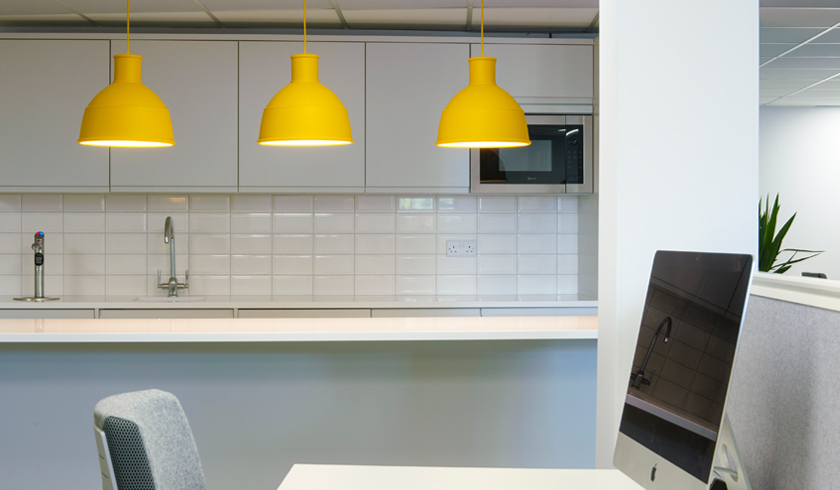18/12/2018
With global warming on the rise, hot summers seem set to become the new norm, or at least, a more frequent occurrence. So, it’s highly likely that a building’s water provision has become a priority and not just an after-thought. But hydration needs consideration all year round – not just in summer.
Nowadays, the humble office kettle and tap doesn’t fit with the busy requirements of the fast-paced workplace. But with a wide range of more sophisticated options available – it can be tricky to find the best solution for your building or workplace project.
Choosing the right appliance or system can benefit the business and employees. Hydrated staff means boosted productivity, and an eco-friendly system enhances business’ sustainability credentials and reduces running costs.
Before specifying, there are factors that should be taken into account to ensure you’re making the right choice. For systems that deliver chilled water for instant refreshment, and/or boiling water for that much needed cup of tea, we take a closer look at five key issues to be considered at the start of a project.
In the UK, the Workplace Health, Safety and Welfare Regulations of 1992, Regulation 22, states employers must provide an adequate supply of wholesome drinking water for all persons, free from contamination.
Not only is water a basic human need, but it’s essential to maintain peak functionality and has been proven to increase productivity. Even in a role where physical activity is minimal, the body loses water, and the slightest dehydration can impact on brain function. A study by East London University on hydration and physical and cognitive performance, found that subjects who were fully hydrated performed 14 percent better.
A big consideration is how many people the system needs to serve. The demand and therefore capacity requirements are going to be very different for an office of six compared to an office of 250.
It’s also important to consider the peak demand periods during the office day, and the maximum hourly demand. Speak to our Zip experts who’ll be able to provide details of capacity, so you can be assured you’re selecting a system that meets the needs of the office.
Making sure every part of a building is as energy efficient as possible is a crucial part of any architect or specifier’s role. Whether it’s the building itself, or the products and systems within, there’s a huge requirement to ensure sustainability.
At Zip we’ve taken this on board and have developed systems that heat or cool water with minimal energy. It’s worth looking for solutions like ours with added auto-sleep functions that reduce power consumption and save energy, while also lowering running costs.
Reducing the use of plastic waste is also a big consideration – particularly with the European Parliament having just approved a ban on single-use plastic by 2021. So, finding a system that doesn’t require plastic bottles or cups is a must.
There are a number of trusted third-party accreditations which certify that a product provides safe, high-quality drinking water, sustainably. Some to look out for are:
· WRAS – The Water Regulations Advisory Scheme (WRAS) is an accreditation that demonstrates that an item complies with the high standards set out by UK water regulations in 1999
· RoHS compliance – shows a product has been manufactured to comply with the European Restriction of Hazardous Substances Directive 2002/95/EC
· BREEAM compliance – the Building Research Establishment Environmental Assessment Method (BREEAM) is the world’s longest established method of assessing, rating, and certifying the sustainability of buildings. As part of achieving this standard, you’ll need to specify products with Environmental Product Declarations (EPDs) which look at the environmental performance over the entire lifecycle of a product
· NSF – this standard looks at the point of use and point of entry drinking water filtration systems and certifies the health and safety of drinking water
Having a filtered drinking water system which reduces scale will ensure your system lasts longer, while also improving the taste and appearance of the drink. But not all filtration is equal. The best filtration is sub-micron, which filters out particles, bacteria and even micro plastics – which have now been found in bottled water, as well as tap.
Here at Zip Water UK, our popular HydroTap, which provides filtered boiling, chilled and sparkling water, features the latest 0.2 micron MicroPurity filtration, 25 times better than your standard water filter jug, which means it provides clean, refreshing water.
It goes without saying that we’d all rather work with a supplier we can trust. When looking for high-quality drinking water solutions for your next project, you want to ensure you are working with the best. Here at Zip, we pride ourselves on not only developing the world’s most advanced filtered drinking water systems, but we take a holistic approach to each and every project to make sure you have exactly what you need.
See our range to find the perfect option for your specifying project.
Talk to us about your next project, request a brochure or arrange a full product demo with one of our team.
